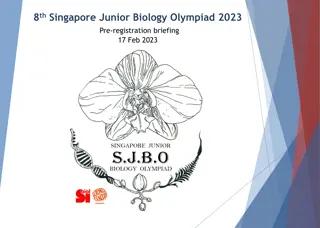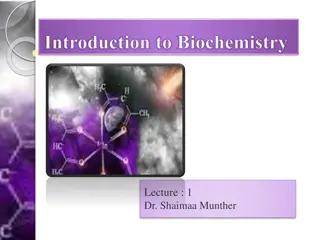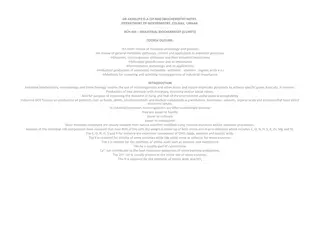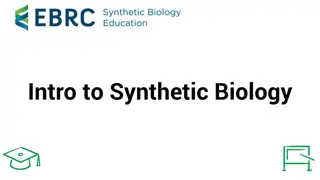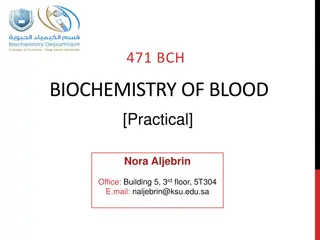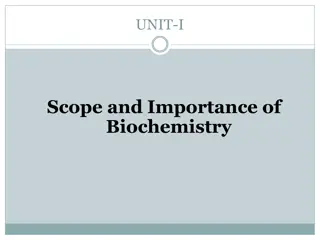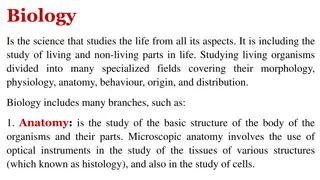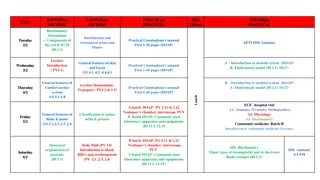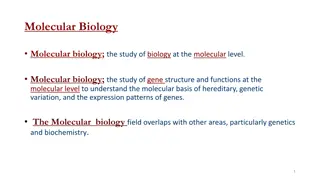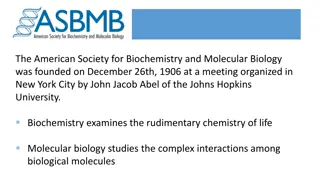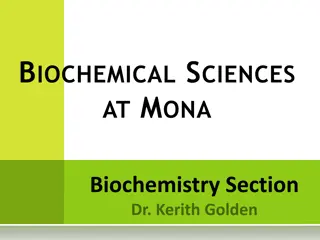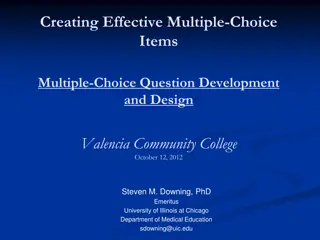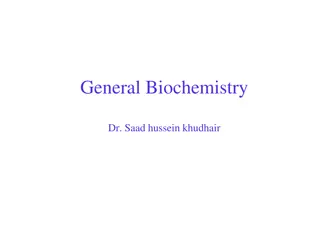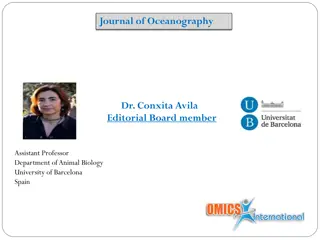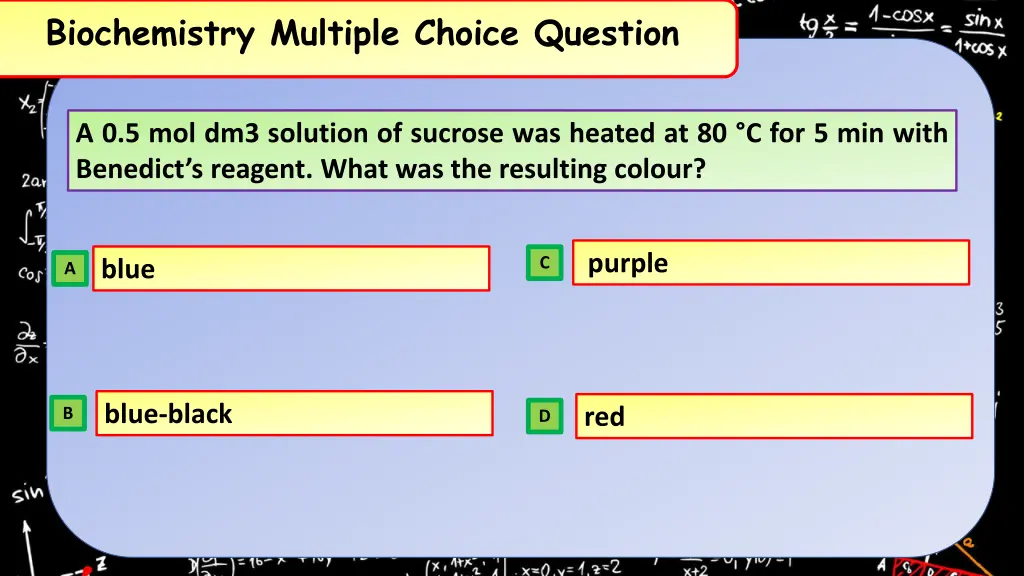
Biochemistry Multiple Choice Questions
Test your knowledge with these biochemistry multiple choice questions covering topics such as color reactions, biological molecules, compounds, carbohydrate structures, hydrolysis, amino acid properties, and acid-base substances. Enhance your understanding of biochemistry concepts through these engaging questions.
Download Presentation

Please find below an Image/Link to download the presentation.
The content on the website is provided AS IS for your information and personal use only. It may not be sold, licensed, or shared on other websites without obtaining consent from the author. If you encounter any issues during the download, it is possible that the publisher has removed the file from their server.
You are allowed to download the files provided on this website for personal or commercial use, subject to the condition that they are used lawfully. All files are the property of their respective owners.
The content on the website is provided AS IS for your information and personal use only. It may not be sold, licensed, or shared on other websites without obtaining consent from the author.
E N D
Presentation Transcript
Biochemistry Multiple Choice Question A 0.5 mol dm3 solution of sucrose was heated at 80 C for 5 min with Benedict s reagent. What was the resulting colour? purple C blue A blue-black red B D
Biochemistry Multiple Choice Question A carbon compound extracted from living tissue was found to contain exactly twice as many hydrogen atoms as oxygen atoms. To which of the following classes of biological molecule is it likely to belong? nucleic acid C carbohydrate A lipid protein B D
Biochemistry Multiple Choice Question Which of these compounds would contain the smallest number of oxygen atoms? a polysaccharide C a saturated fatty acid A a polypeptide glycerol B D
Biochemistry Multiple Choice Question Which one of these carbohydrates contains 1-6 glycosidic bonds? maltose C amylose A amylopectin cellulose B D
Biochemistry Multiple Choice Question On complete hydrolysis, which of the following would produce the fewest molecules? triglyceride C phospholipid A sucrose polypeptide B D
Biochemistry Multiple Choice Question Amino acids vary according to their R group. Which one of the following R groups would be hydrophobic? CH2 COOH C CH3 A CH2 OH H B D
Biochemistry Multiple Choice Question Substances which can act as both acid and base are used in experiments to maintain a constant pH. What are the substances known as? cofactors C polar molecules A buffers reducing agents B D
Biochemistry Multiple Choice Question Which of the following molecules does not yield only glucose molecules on complete hydrolysis? maltose C amylose A glycogen sucrose B D
Biochemistry Multiple Choice Question Which of these techniques could be used to separate molecules according to their differential solubility in a given solvent? ultracentrifugation C electrophoresis A chromatography filtration B D
Biochemistry Multiple Choice Question How many different tripeptides can be made using the 20 commonly occurring amino acids? 40 C 800 A 8000 6000 B D

